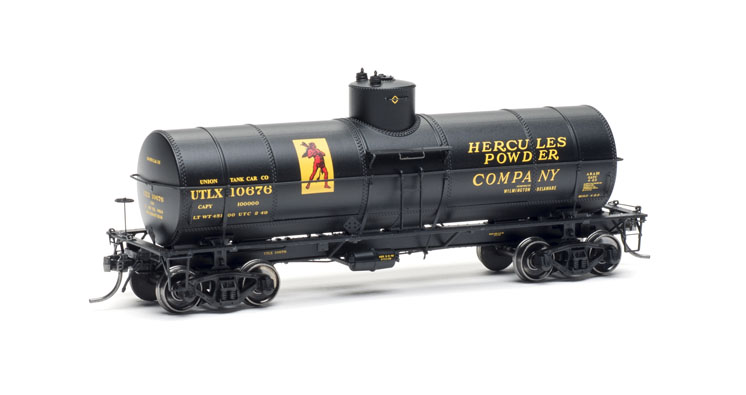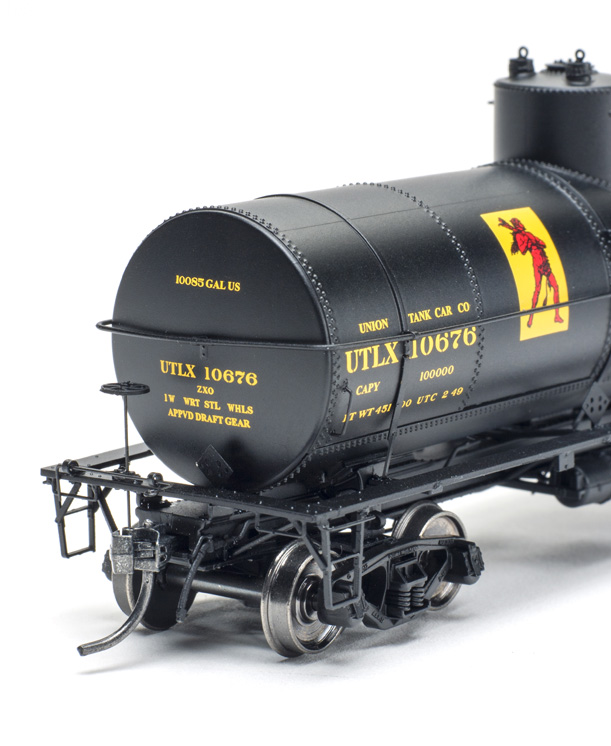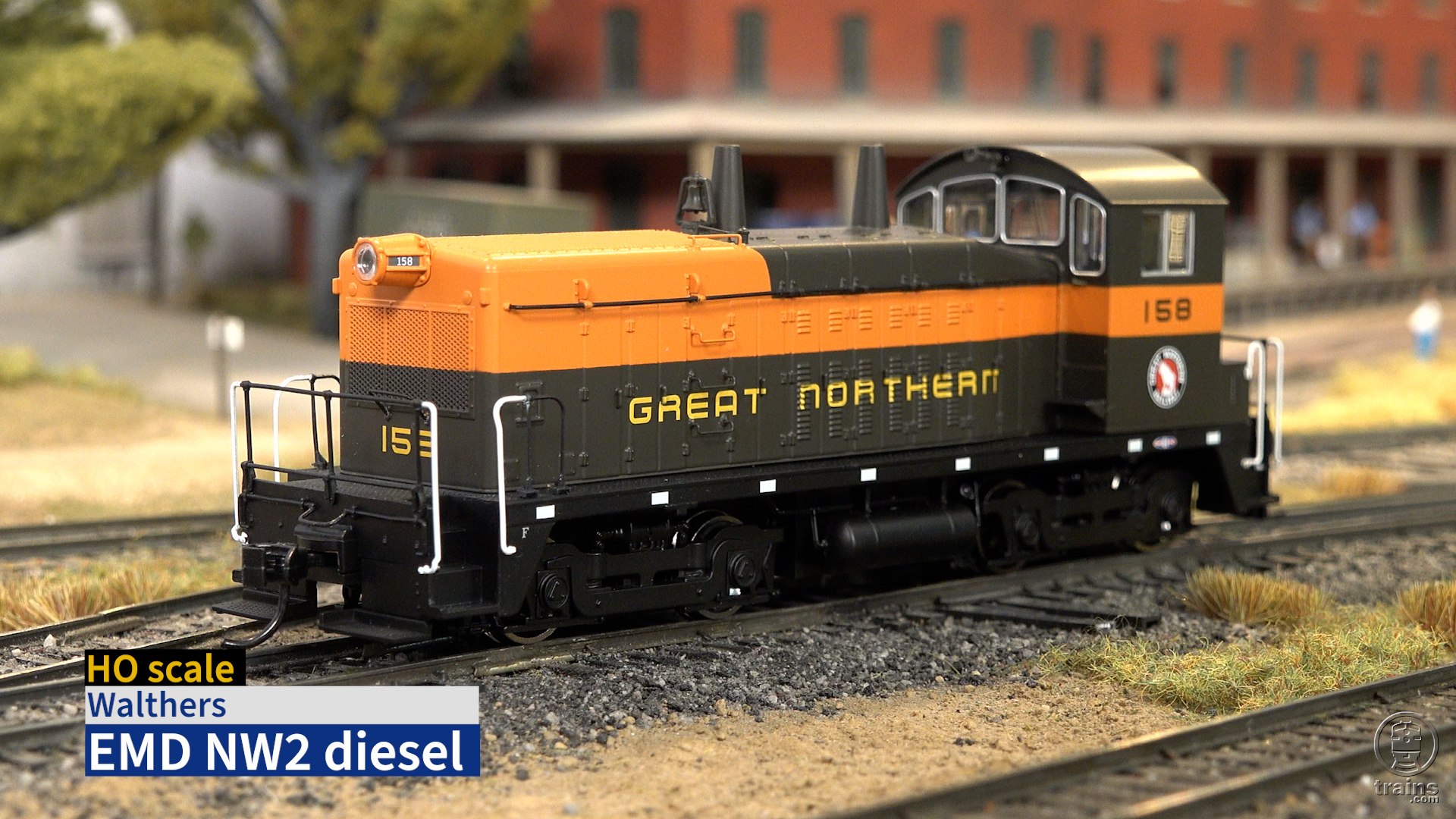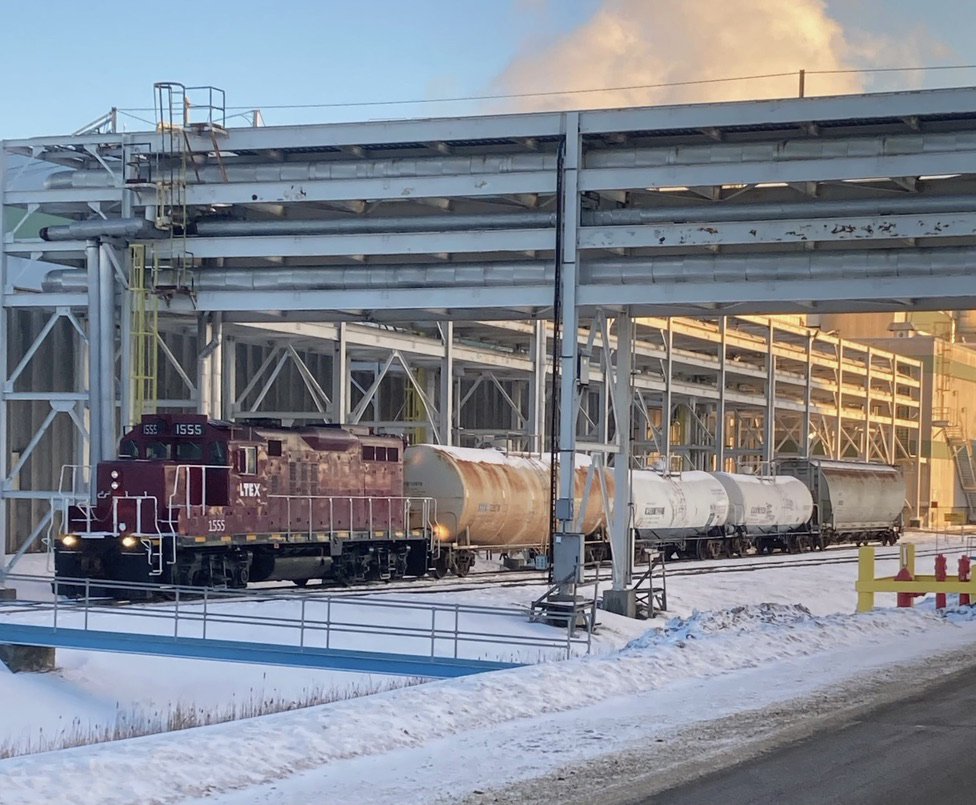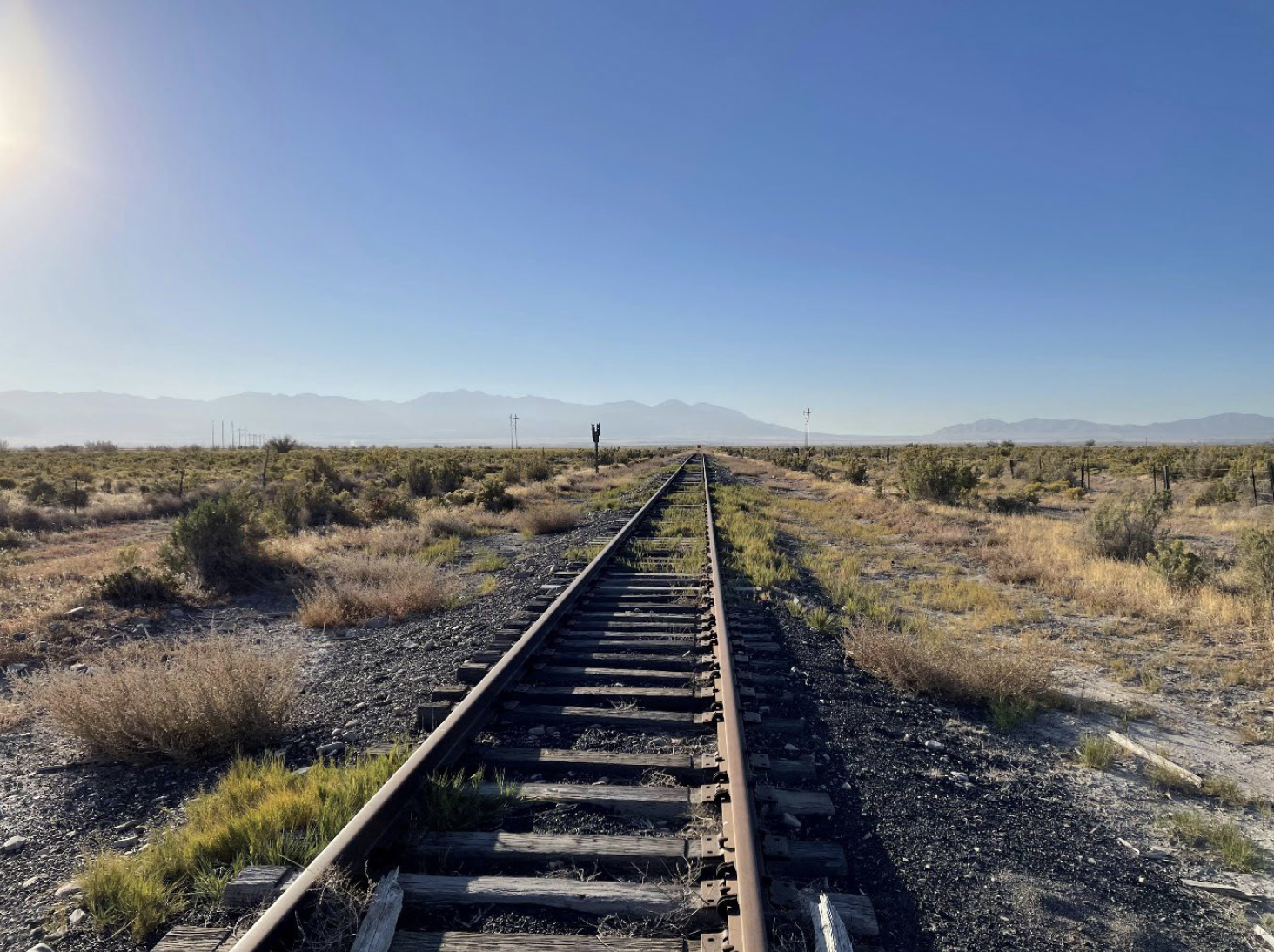Tanks for the memories. To deal with increased demand for oil during World War I, thousands of tank cars were built for oil companies, railroads, and car leasing companies. After the oil boom faded, many of these cars went back to their builders and were repainted for new owners. Tangent’s three offerings are all such repaint schemes.
Our sample, bearing Union Tank Car Leasing (UTLX) reporting marks, is painted for the Hercules Powder Co., a paint scheme the 1923-built prototype acquired in 1949. In addition to gunpowder, dynamite, napalm, and solid rocket fuel, Hercules also made other chemicals, including turpentine, adhesives, rosin (used in papermaking), and acetone, any of which might be carried in a tank car like this one.
The other paint schemes available in Tangent’s offering are both oil companies. Microscale and Tichy Train Group offer appropriate hazardous materials placards in HO scale.
The courses, of course. The term “radial course” refers to the steel sheets that make up the tank. On a car like this, the sheets are bent in a U shape and riveted side-by-side to form the cylinder. On radial course tanks like this one, there is a visible “step” where each course overlaps the next. Tangent has reproduced this detail well. Also impressive are the fine rivet detail and the straps that hold the tank to the frame.
The Association of American Railroads (AAR) established classes of tank cars in an effort to minimize disasters from train wrecks or derailment by ensuring that hazardous cargos were carried in cars designed to handle them. Lettering on the side of our car designates it as an AAR Class III tank, which refers to a double-riveted boiler-plate steel tank that could withstand up to 300 psi of pressure.
The model’s black paint was smoothly and evenly applied, and the yellow lettering was opaque, straight, and legible. The lettering, as well as the placement of details, matched prototype photos.
We were unable to locate a builder’s diagram or other source of dimensional data for this car. Even the 1953 Official Rail Equipment Register lists only the car’s capacity. David Lehlbach of Tangent informed us that the car was designed using measurements taken from a prototype car in the 1980s.
I tested the car on a couple of our project layouts and found it rolled easily through 18″ curves and no. 5 turnouts. The metal Kadee scale-sized couplers were mounted at the correct height, and the chemically blackened metal wheelsets were in gauge.
Though the paint schemes Tangent is offering are all repaints from 1935 or later, the car is also available both undecorated and painted black but unlettered, ready to be decaled for any owner from 1917 to the cars’ demise in the 1970s.
Radial-course tank cars like the prototypes for these models roamed the rails of every line from coast to coast for more than 50 years, usually in blocks of multiple cars. Tangent’s new model would therefore be an appropriate addition to any HO scale railroad from the steam to early diesel eras.
Manufacturer
Tangent Scale Models
P.O. Box 6514
Asheville, NC 28816
www.tangentscalemodels.com
Era: 1917 (1949 as decorated) to 1970s
Road names: Hercules Powder Co. (1949+, four road numbers, ULTX reporting marks), Humble Petroleum Products (1935+, four numbers), and Sinclair Oil (1947+, six numbers). Also available painted black but undecorated, and unpainted.
Features
• Blackened metal wheels in gauge
• Era-appropriate brake equipment
• Kadee metal scale knuckle couplers at correct height
• Injection-molded plastic body
• Prototype-specific details
• Weight: 3.8 ounces (.3 ounce overweight according to National Model Railroad Association Recommended Practice 20.1)
• Wire grab irons, lift rings, and uncoupling levers





